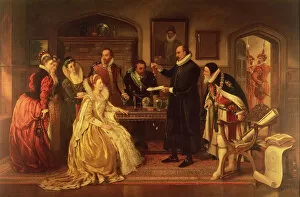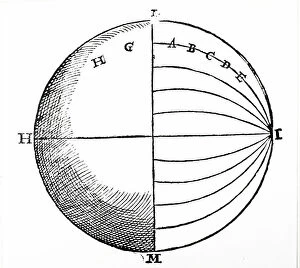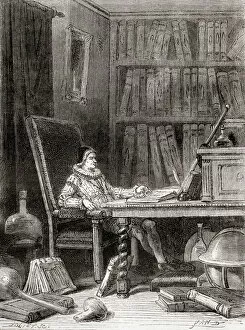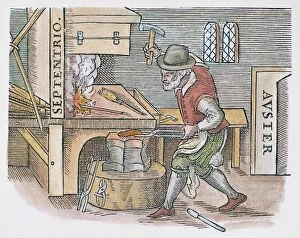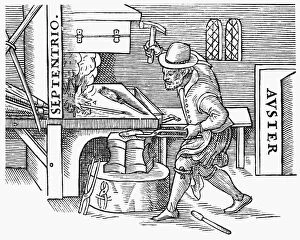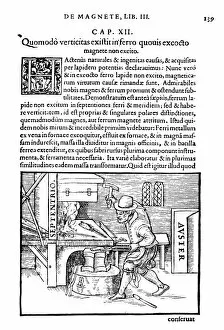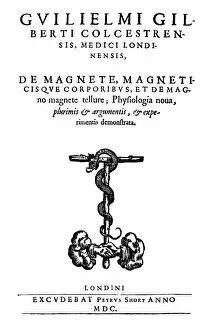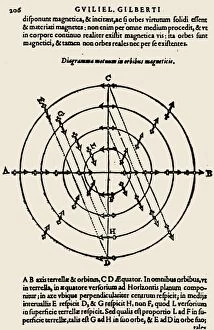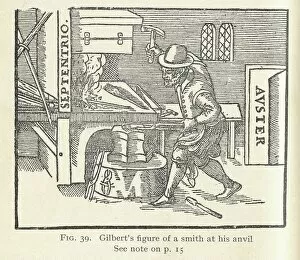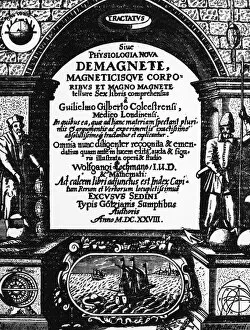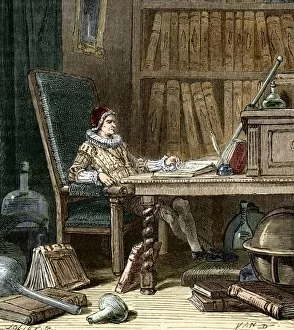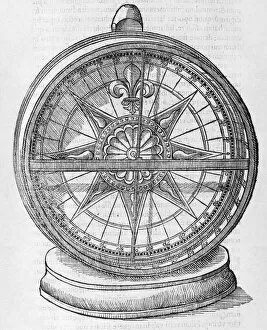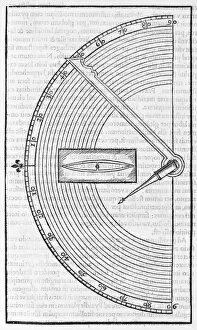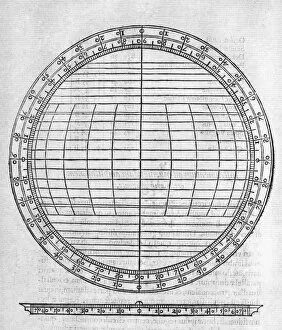De Magnete Collection
"Exploring the Electrifying World: Dr. William Gilbert's De Magnete" Step into the fascinating world of scientific discovery as Dr
For sale as Licensed Images
Choose your image, Select your licence and Download the media
"Exploring the Electrifying World: Dr. William Gilbert's De Magnete" Step into the fascinating world of scientific discovery as Dr. William Gilbert, a renowned English physician and physicist, showcases his groundbreaking experiments on electricity to none other than Queen Elizabeth I herself. In this captivating scene captured on page 49 of his masterpiece "De Magnete, " we witness Gilbert's dedication to unraveling the mysteries of magnetism. Turning our attention to page 57, we delve deeper into the pages of "De Magnete, " where Gilbert's meticulous observations and detailed explanations come to life. With every word penned in London in 1600, he unveils a new realm of understanding magnetic forces that would shape future scientific endeavors. In another corner of history depicted within Les Merveilles de la Science publication, we catch a glimpse of William Gilbert engrossed in writing his magnum opus. The intensity radiating from him reveals the passion with which he pursued knowledge and shared it with the world. Transporting ourselves back to 1600, we find ourselves amidst an iron-smithy witnessing an intriguing process – blacksmiths hammering heated iron bars for magnetization purposes. This pivotal moment showcased not only practical applications but also highlighted how magnetism could be harnessed for various uses. Gilbert's profound work is further exemplified through images extracted from "De Magnete. " One such illustration portrays the mesmerizing process by which iron is magnetized under careful guidance – a testament to both science and craftsmanship intertwining harmoniously. As we turn our attention towards yet another remarkable artifact -the title-page from the first edition- it becomes evident that "De Magnete" was destined for greatness right from its inception. Its impact resonates even today as one marvels at its historical significance and contributions to our understanding of magnets and their properties. The legacy left behind by William Gilbert continues to inspire generations as seen through these captivating glimpses into his world.

